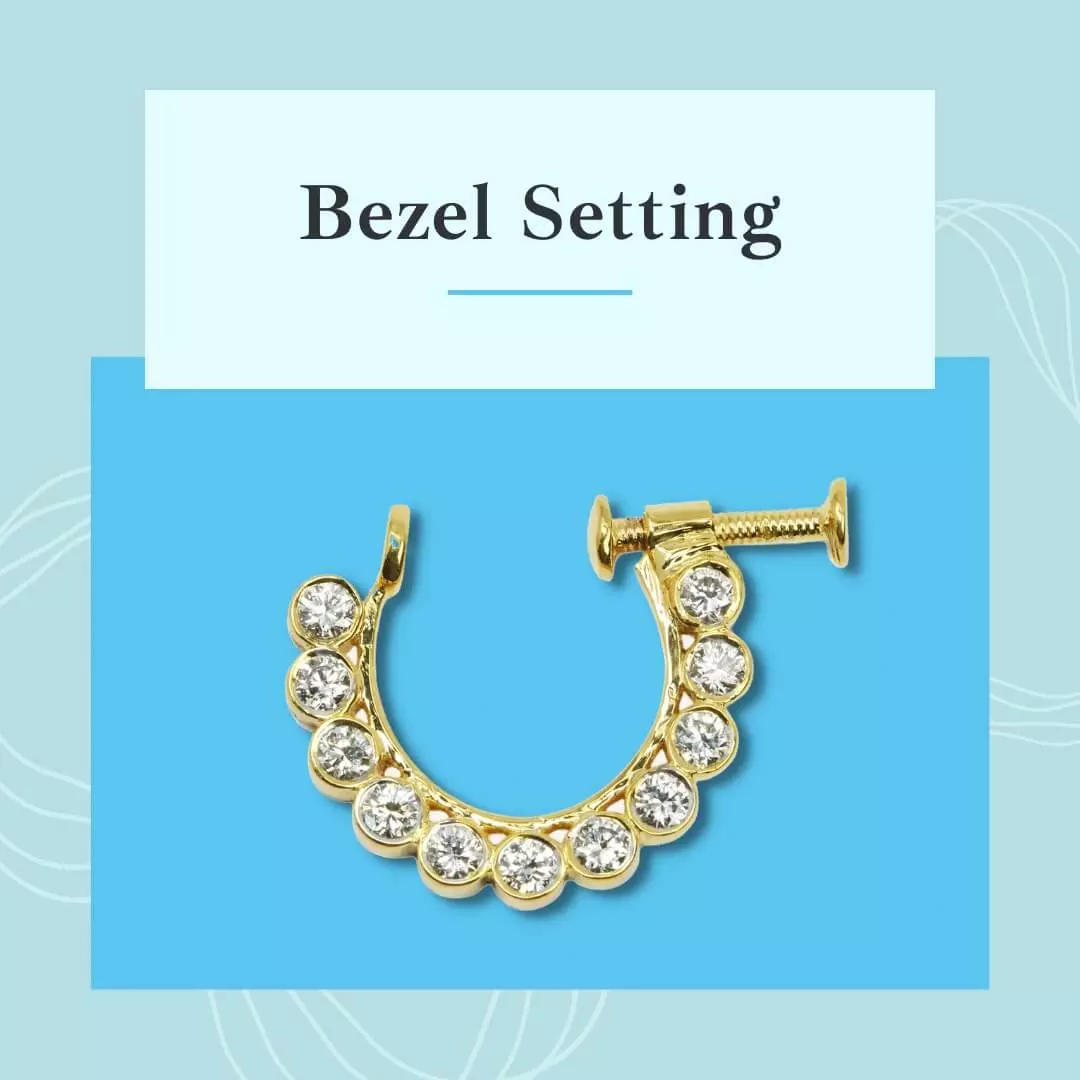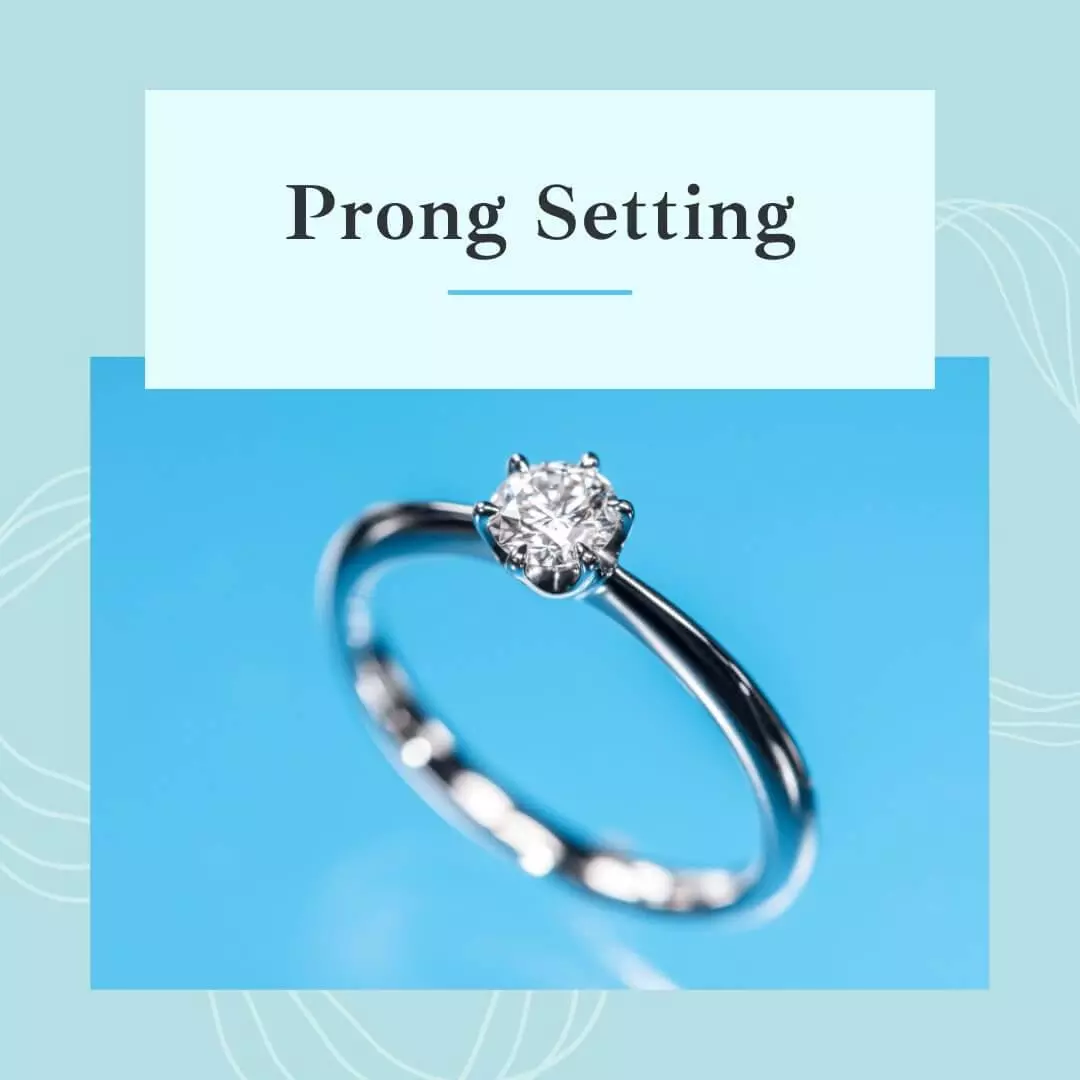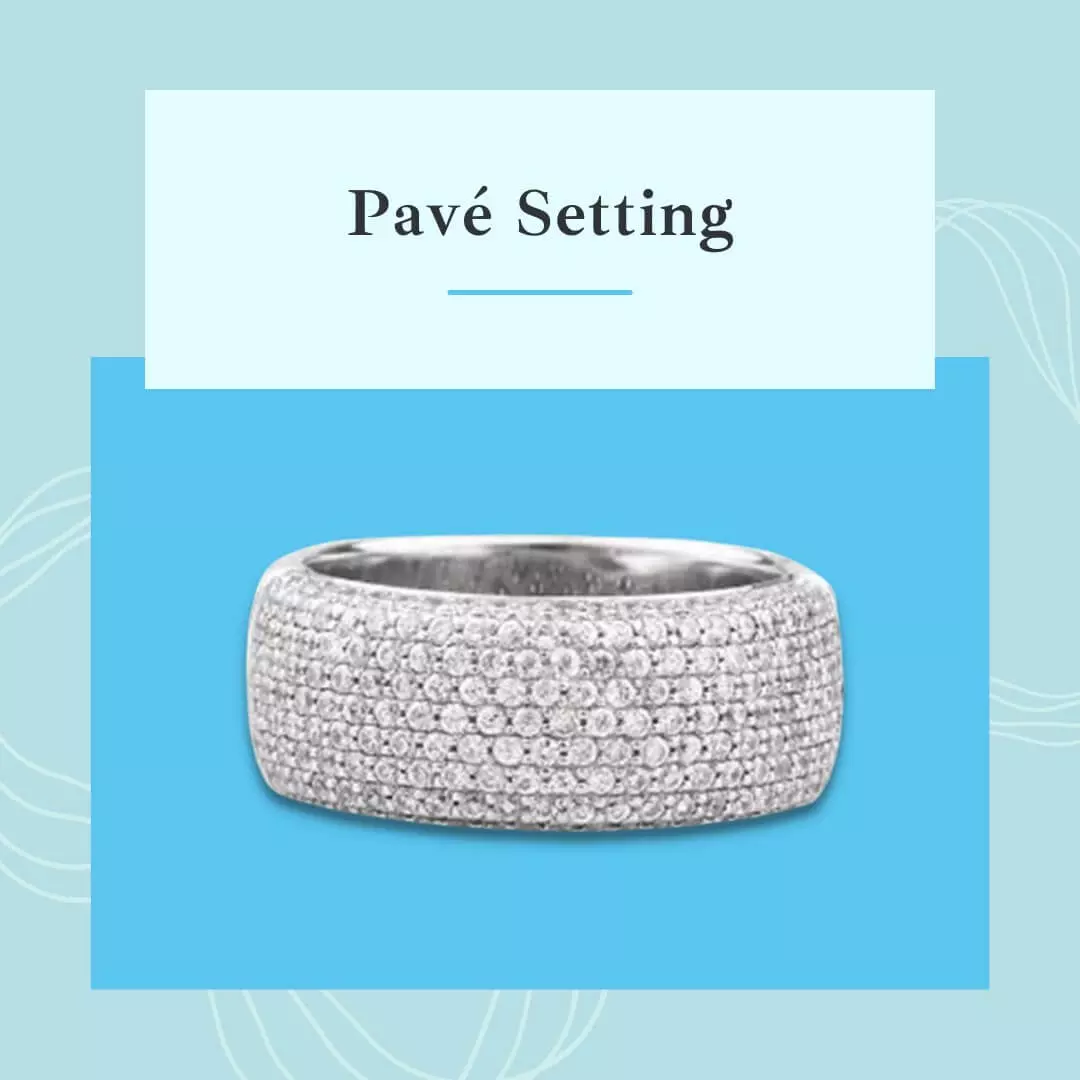The art of stone setting has a long history, dating back to the Ancient Romans who developed the earliest type of jewellery setting that is still widely used in jewellery today. In the earliest phase of this art, gemstones were cemented into rudimentary settings, or holes, made for the purpose of securing gemstones to the piece of jewellery for adornment. However, over the century, stone setting has evolved beyond the sole purpose of attaching precious stones and has weaved itself into the very design and aesthetic of the piece of jewellery.
The number of setting styles today are innumerable, but these below three types of settings have remained popular over the years and commonly used the world over.
Bezel setting

The first jewellery setting to be invented by the Ancient Romans, this style has passed the test of time as it is still frequently featured in modern jewellery.
The gemstone is surrounded by a rim of metal that just slightly extends over the top of the stone. The protruding metal is then pushed over onto the top of the stone all over its outline, thus enclosing the stone in a very secure setting with little chance of the stone falling out. However, a drawback of encasing most of the stone in metal is the reduced light that enters the stone, which means that the gemstone does not get to shine as brilliantly as it could have if placed in other types of setting.
But this is where the invention of the partial, or semi-bezel setting proves handy. Instead of surrounding the full outline of the gemstone with metal, the semi-bezel covers only some portions of the stone, exposing more of the stone to the light while still maintaining a good degree of protection.
Bezel setting is covered in JDMIS’ Traditional Metalsmithing 100.
Prong setting

This is the setting that people are most familiar with, and the most popular one, especially in the case of engagement rings. The most iconic representation of the prong setting is probably the famed Tiffany ring, invented in the 1880s so that the brilliance of a good diamond can be better displayed and appreciated. With a diamond held up high to the light by six prongs, the Tiffany setting makes the stone look as if it is ‘floating.’
The prong setting is sometimes also called the claw setting because the stone is held securely as if gripped by a claw. The gemstone sits in a cradle of evenly spaced prongs – typically three, four, or six – and the tips of the prongs are bent over the girdle of the stone to hold it in place. Similar to how our nails can be filed into different shapes, these prongs can also be shaped differently to suit the aesthetic of the ring or the preference of the wearer, be they rounded, pointed, flat, or double-clawed. They can even be shaped decoratively, or embedded with more gemstones to achieve a stunning, elaborate design.
Prong setting is covered in JDMIS’ Traditional Metalsmithing 200
Pavé setting

This is yet another popular style of setting favoured by many. Originated from the French word ‘Pavé’, which means pavement, the pavé setting features a carpet of brilliance across the surface of the jewellery, paved with closely set gemstones.
This look is achieved by embedding rows of tiny gemstones into the metal of the jewellery. First holes are drilled into the metal to create seats for the gemstones to sit in. Then, tiny beads are raised from the metal using engraving tools and then pushed onto the stones to secure them in place. As these little beads of metal are rounded off and polished to a high shine, they virtually disappear against the glittering gemstones, giving an appearance of a continuous glittering surface.
Pavé setting is covered in JDMIS’ Traditional Metalsmithing 300
Settings are also an integral part of jewellery design, with the look of the setting flowing seamlessly with the aesthetic of the whole jewellery piece. Learn more about the diverse types of setting in Classical Jewellery Design and how to produce accurate representations of the settings on paper; or explore a wide range of settings and commercially popular styles in the libraries of a Digital Design software and learn how to integrate them into your designs to achieve a stunning piece of jewellery.
Tanja M. Sadow G.J.G.
Dean and founder of the Jewellery Design and Management International School